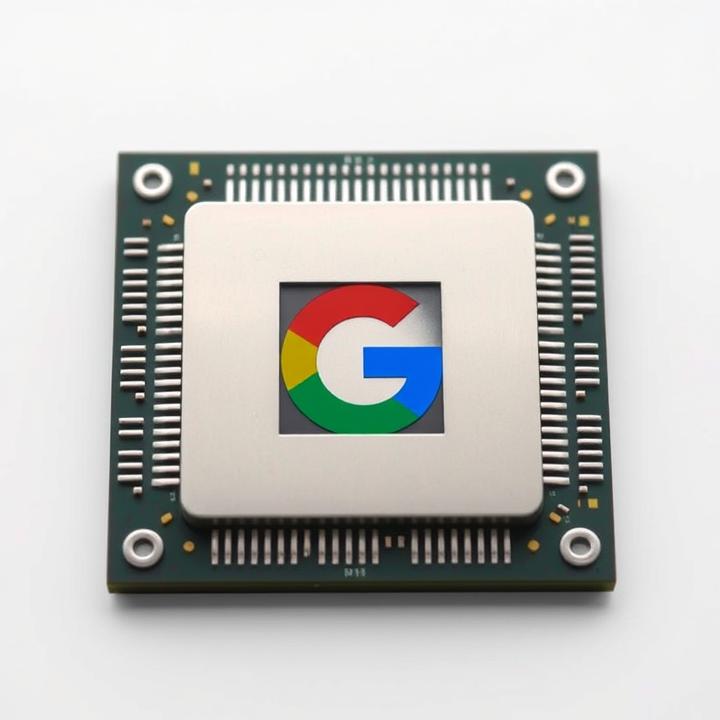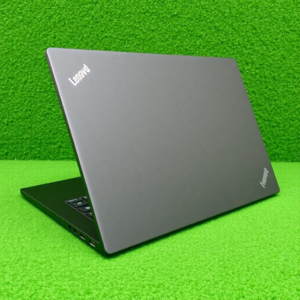Google’s Custom Chip: The Tensor Processing Unit (TPU)

Google’s Tensor Processing Unit (TPU) is a custom chip designed specifically to accelerate AI and machine learning tasks, revolutionizing data processing efficiency and performance.
As the demand for faster and more efficient artificial intelligence (AI) processing grows, Google has developed its own custom chip, known as the Tensor Processing Unit (TPU). This chip is specifically designed to accelerate machine learning workloads and power the company’s AI-driven applications, such as Google Search, Google Assistant, Google Photos, and Google Translate. TPUs have become a core part of Google’s AI infrastructure, allowing the company to perform complex computations at unprecedented speeds and with greater efficiency than traditional processors.
In this article, we explore the evolution of Google’s TPU, its architecture, and how it has transformed AI processing both within Google and across the industry.
1. What is the Tensor Processing Unit (TPU)?
The Tensor Processing Unit (TPU) is a type of application-specific integrated circuit (ASIC) designed by Google specifically for accelerating machine learning workloads. Unlike general-purpose CPUs or GPUs, TPUs are optimized for processing neural networks, making them especially powerful for deep learning tasks that involve large amounts of data and computations.
Google introduced the first TPU in 2015, with the aim of enhancing the performance of its AI models, particularly those used for natural language processing (NLP) and computer vision tasks. Since then, the TPU has evolved into several versions, with each iteration offering greater computational power and efficiency.
Key Design Features:
- Specialization for Machine Learning: Unlike CPUs or GPUs, which are designed to handle a wide range of tasks, TPUs are tailored specifically for machine learning models, such as TensorFlow, Google’s open-source machine learning framework.
- Optimized for TensorFlow: TPUs are designed to work seamlessly with TensorFlow, enabling faster training and inference of machine learning models.
- High Efficiency: TPUs provide high computational throughput with lower power consumption compared to other hardware solutions, making them ideal for large-scale AI tasks.
2. Evolution of the TPU: From TPU v1 to TPU v4
Since its introduction, the Tensor Processing Unit has undergone several key upgrades, each version offering significant improvements in performance, efficiency, and scalability. These advancements have solidified Google’s position as a leader in AI hardware innovation.
2.1 TPU v1
The first generation of TPUs was released in 2015 and was used internally by Google for tasks like search ranking, machine translation, and image recognition. TPU v1 was designed specifically for inference—executing trained models—rather than training new models.
2.2 TPU v2
Introduced in 2017, TPU v2 brought significant enhancements, most notably the ability to handle both model training and inference. TPU v2 featured floating-point computation, making it versatile for a wider range of machine learning applications. It also marked the first time that TPUs were made available to external users via Google Cloud.
- Cloud TPU: With TPU v2, Google launched Cloud TPUs, allowing businesses and researchers to rent TPU resources on Google Cloud Platform (GCP) for faster model training and inference.
2.3 TPU v3
TPU v3, launched in 2018, delivered even greater performance improvements, particularly for large-scale AI projects. It offered more than twice the computational power of TPU v2, making it ideal for deep learning tasks with massive datasets.
- TPU Pods: With TPU v3, Google introduced TPU Pods, which are clusters of interconnected TPUs that work together to accelerate large-scale AI workloads. These pods allow researchers to train complex models much faster, unlocking new possibilities for AI research.
2.4 TPU v4
The latest generation, TPU v4, was introduced in 2021 and represents the cutting edge of AI hardware. TPU v4 offers a substantial leap in performance, delivering up to 10x faster processing than TPU v3 for certain workloads. TPU v4 is specifically designed to support next-generation AI models that require vast amounts of computing power, such as large language models (LLMs) and generative models.
3. How TPUs Power Google’s AI Applications
Google’s Tensor Processing Units play a crucial role in powering many of the company’s AI-driven products and services. Some of the most notable applications include:
3.1 Google Search
TPUs help optimize Google’s search algorithms by improving the speed and accuracy of query processing. With AI models like BERT (Bidirectional Encoder Representations from Transformers), TPUs enhance natural language understanding, allowing Google Search to deliver more relevant results based on the context of the user’s query.
3.2 Google Photos
Google Photos uses AI to categorize, tag, and enhance images. TPUs accelerate the deep learning models that recognize faces, landmarks, and objects, making it easier for users to organize their photo collections. Features like automatic photo enhancements and search-by-image capabilities are made possible by TPU-powered AI.
3.3 Google Translate
The Neural Machine Translation (NMT) system used by Google Translate relies on deep learning models to provide accurate translations across multiple languages. TPUs enable the real-time processing of large amounts of text, allowing Google Translate to quickly generate high-quality translations.
3.4 Google Assistant
TPUs also power the AI models behind Google Assistant, enabling faster voice recognition, more natural conversation, and improved context understanding. These enhancements make interactions with Google Assistant more seamless and efficient, allowing for better user experiences.
4. TPUs in Google Cloud: Democratizing AI Power
One of Google’s key objectives in developing TPUs was to make AI processing power accessible to businesses, researchers, and developers through Google Cloud. By offering Cloud TPUs, Google provides the ability to harness TPU performance without the need for costly on-premise infrastructure. This democratization of AI power allows organizations of all sizes to leverage advanced machine learning models.
4.1 Cloud TPU Use Cases
- Enterprise AI: Companies can use Cloud TPUs to train large models faster, optimizing processes like customer service automation, fraud detection, and product recommendation systems.
- AI Research: Cloud TPUs are popular among academic and corporate researchers working on cutting-edge AI projects. The ability to train models quickly allows researchers to experiment with new architectures and techniques more efficiently.
- Healthcare AI: In the healthcare sector, TPUs are being used to power AI models for medical imaging, diagnostics, and drug discovery, helping to accelerate the pace of innovation in these critical areas.
5. The Future of AI and TPUs
As AI technologies continue to evolve, the need for even more powerful and efficient computing infrastructure will grow. Google’s TPUs are likely to remain at the forefront of this trend, driving advancements in AI research and applications.
5.1 AI Advancements with TPU v5 and Beyond
Though TPU v4 represents the current state of the art, Google is already working on future generations of TPUs that will support even larger and more complex AI models. These advancements will be key to unlocking the full potential of AI, particularly in areas like autonomous systems, language modeling, and healthcare AI.
5.2 Environmental Considerations
One of the challenges associated with AI hardware is the growing energy consumption required to power large models. Google has made strides in improving the energy efficiency of its TPUs, and future versions will likely prioritize sustainability, reducing the environmental footprint of AI processing.
Google’s Tensor Processing Unit (TPU) is a groundbreaking technology that has revolutionized AI and machine learning by providing faster, more efficient hardware for complex computational tasks. From powering Google’s own products to enabling cutting-edge AI research and development in the cloud, TPUs are at the forefront of AI innovation. As Google continues to improve the performance of its TPUs, the future of AI looks set to achieve new heights, with even larger models, faster processing times, and greater accessibility for businesses and researchers alike.



